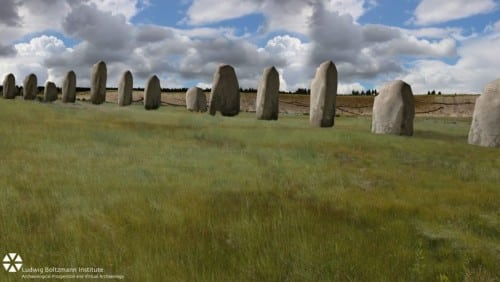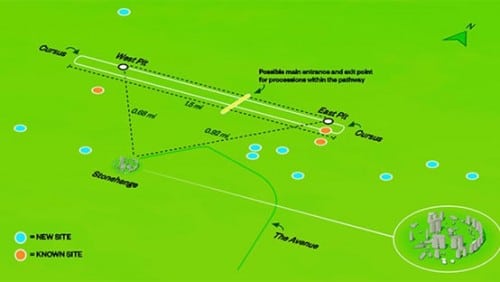Multi-sensory research has revealed that the pastoral landscape surrounding the Stonehenge site contains at least ninety more stones, some of which reach 4.5 meters in height, about thirty of which may be well preserved

The pastoral landscape surrounding the Stonehenge site contains at least ninety more stones, some of which reach 4.5 meters in height. Many of these stones survived because they were pushed into the pits in which they were placed. Only the use of modern technologies allowed archaeologists to uncover their presence without having to dig. Until now, archaeologists thought that the area around Stonehenge no longer contained significant stone structures.
The scientists discovered that the largest neighboring structure - the Dorrington Wall, which is about three kilometers from the known site, contained an older layer that included a row of locally sourced stones. The scientists who worked on the Stonehenge Hidden Landscape project used multi-sensor technology and discovered huge stone tombstones in the area where the Pera settlement wall was later built -Historical Dorrington, and who is known as "Super Henge."

Dorrington Wall is one of the largest formations on the site and its diameter is estimated at 500 meters. According to estimates, it was built 4,500 years ago. The perimeter of the wall is over 1.5 kilometers, and its thickness is 17.6 meters. The circle (or rather semi-circle) now exposed surrounded an inner circle of stone and wooden pillars From a Neolithic settlement that was uncovered about eight years ago.
The Stonehenge Hidden Landscape Project is an international partnership between the University of Birmingham and the Ludwig Boltzmann Institute for Archaeological Exploration and Virtual Archaeology. The research was led by Prof. Wolfgang Neubauer and Prof. Vincent Gaffney from the University of Bradford. As part of the project, experts from various fields and institutions examined the area surrounding Stonehenge
Stonehenge's Hidden Landscape Project staff using non-invasive technologies and remote sensing evidence of another row containing about 90 standing stones some up to 4.5 meters high. Many of these stones, which were cut from the local limestone rock, survived because they fell aside from the moat in which they were placed. They were hidden for thousands of years, and only the use of modern sensing technologies allowed archaeologists to uncover them without digging the ground. The new site is at the mouth of a natural dry land in front of the Avon River.
The high-resolution ground-penetrating radar revealed an incredible row of 90 stones, some of which were pushed aside from the moat in which they were placed. In the east, about 30 stones with dimensions of 4.5 meters by 1.5 meters by XNUMX meter were discovered. In the rest of the site, these stones were dismantled or only their base could be found," says Prof. Neubauer.
According to the scientists, the new discovery has significant implications for our understanding of Stonehenge and the area around it. Dorrington Wall - the fortification surrounding Stonehenge in a wider circle was built about a thousand years after the inner circle (in the 27th century BC), but the new row of stones may be the same age as the stones we know in the center of the circle or even earlier than them.
In addition to the fact that these stones testify to what the early phase of monumental architecture looked like in one of the largest cult sites in prehistoric Europe, the discovery also raises significant questions about the site and the people who built Stonehenge and lived in the area and changed it through the construction of these monuments during the third millennium BC.
"The discovery of new, impressively preserved stones has significant implications for our understanding of what is happening at and around Stonehenge. The new row of stones may be the same age as the famous central circle or even predate them," explains Prof. Gaffney, who adds that the project is of great importance for the expected preservation of these stones, which are unique to British archaeology.
For the announcement of the Ludwig Boltzmann Institute
More of the topic in Hayadan:
